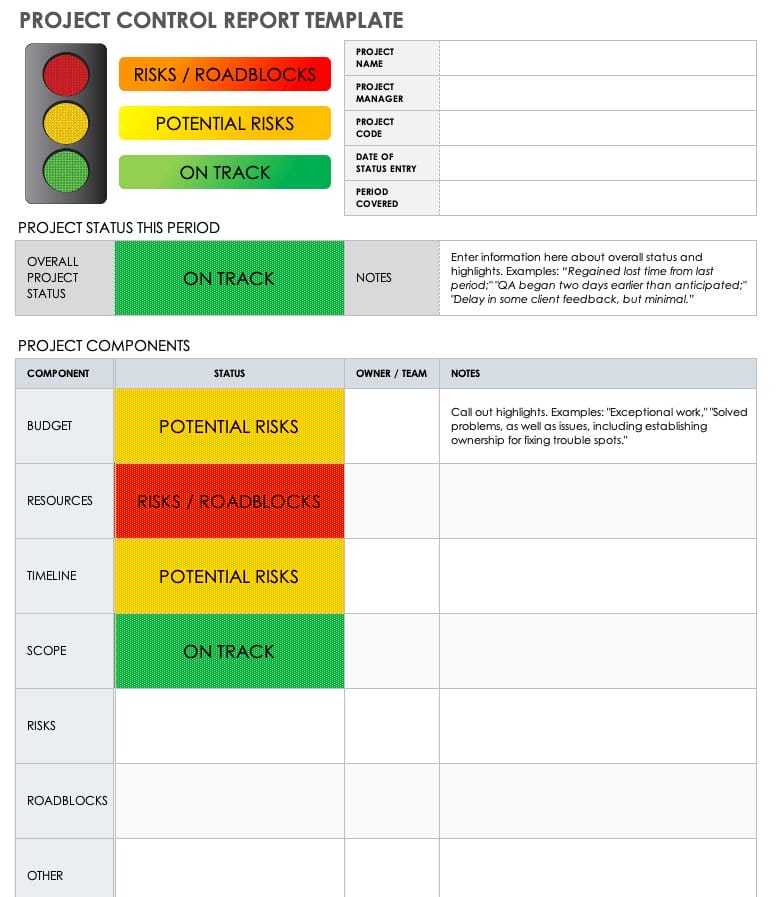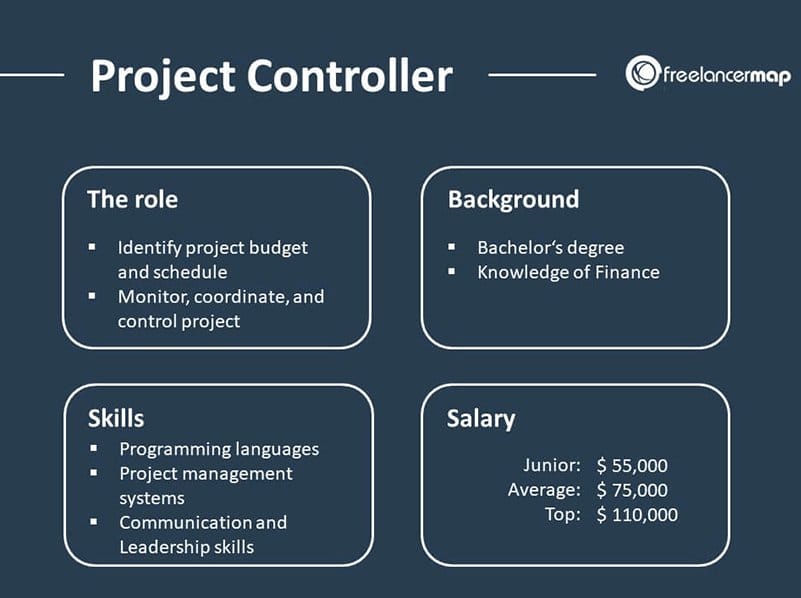Project Controls: Key Elements, Benefits, and How To Use Them
Do you struggle to meet your targets for small or large-scale projects? Are your projects regularly affected by cost overruns and delayed timelines? Project management statistics show that only 2.5% of companies complete their projects 100% successfully.
The reason why your project fails is because of multiple reasons like unclear project goals and objectives, weak resource planning, and unclear project accountability. However, with project controls in place, you can deliver on time and within budget.
As project managers, you must understand the critical elements of project controls, benefits, and applications.
This article will discuss the intricate elements of project controls and their significance in project management.
What Are Project Controls?
Project controls are a set of methodologies and tools used to assess and influence a project's time, cost, and quality. You can use it as a tool for monitoring projects and ensuring they follow pre-planned and scheduled budgetary limits.
The use of project control techniques is important because the success of a project depends on the time, budget and schedule, and facilitates the successful delivery of project deliverables.
These tools and methodologies help in handling critical aspects such as schedule management, risk management, and resource management.
Project controls focus on minimizing the project budget and help organizations stick to the project schedule while staying within the project scope. Use project management software to schedule and automate the project control process for effective project progress.

Importance Of Project Controls
1. Project Planning
Project controls play an essential role in the project planning phase. Their influence extends across the project landscape and ensures organizational goals are aligned.
2. Proactive Decision-Making
The data gathering and management processes within project controls enable proactive decision-making. These processes thereby make substantial contributions to the ultimate project success.
3. Helps Establish a Project Timeline
Project controls help to streamline time and optimize the adequate use of resources, especially when a project begins. With project control techniques in place, the right move and actions will happen at an accurate time frame for optimum results.

4. Clarity
By delving deep into critical aspects such as cost, duration, and expected value or quality, project controls are the anchors for answering fundamental questions that define project controls.
5. Work and Responsibility Alignment
Project controls help to keep every department and team member on the same page regarding the state of a project and ensure there is no friction.
When to Use Project Controls
Project team members play a crucial role in the utilization of project controls throughout the project management life cycle.
1. Risk Mitigation
Project controls play a pivotal role in risk mitigation and ensure the accurate crafting of project timelines for the smooth delivery of successful projects. As the project progresses into the project execution and monitoring phase, the reliance on project controls increases.

2. Schedule Creation
Project controls act as steadfast guides, maintaining watch to uphold focus and prevent schedule deviations. They help manage resources efficiently. One of the critical roles of project controls is to act as early warning systems.
3. Project Updates and Improvements
In every project phase, project controls function as valuable assets. They actively contribute to the process of gathering performance-related information.
Project controls help conduct a thorough analysis of project outcomes and pinpoint areas for improvement.
4. Project Closure
Closing the project is the last phase of the project management life cycle. To ensure the success of this aspect, you must put your project controls tool to work.
Benefits Of Project Controls
The positive impacts of project controls guided by the project manager cut across different areas of project management.
These multifaceted benefits of project controls extend beyond immediate project closure. They extend beyond enhancing predictability, curbing scope creep, and enabling the analysis of data for future projects.
Let's consider some vital benefits of project controls.
1. Creating Project Plans
Project controls play a pivotal role in crafting a resilient project plan that integrates projects with organizational goals while maximizing the judicious use of resources.

2. Aids Project Management Process
Project controls act as strategic navigators in project management by offering insights into critical project aspects by using project templates. These aspects include project cost, duration, and anticipated outcomes within the project control process.
3. Risk Management
The risk management facet of project controls is essential and contributes to a remarkable 15% reduction in the probability of schedule slips. These underscore the tangible economic impact associated with robust project controls.
4. Cost Reduction
With all the vital tools of project controls in place, an organization can successfully reduce costs significantly. Such companies will have valuable insight to make timely decisions with project KPIs in focus, resulting in reduced waste and cost in production.
5. Prevention of Future issues
Project controls help in notifying project managers of potential issues and bottlenecks. This early detection facilitates swift resolutions and addresses quality concerns.
Reports That Every Project Controls Team Should Have
Project control teams rely on specific reports to meticulously monitor and analyze project data. These reports ensure the timely execution of tasks and enhance informed decision-making throughout the project life cycle.
Integrating these crucial reports improves the efficiency and effectiveness of project control mechanisms.
Here are four fundamental reports that every project control team should incorporate into their operational framework.
1. Cost Report
The cost report is a cornerstone in project management and is a fundamental project control document for communication within the project team and with stakeholders. It provides comprehensive project metrics on various aspects of project costs.
This concept gives details on actual budget consumption and committed expenditures. Team members rely on cost reports containing ratios depicting the relationship between actual and planned project work.
The visual representation of this data through an S-Curve enhances the clarity and accessibility of the information.
2. Change Management Register
When it comes to project execution, changes are inevitable. The change management register is vital in tracking deviations from the initial project scope.
This register aids in preparing for and effectively communicating the impact of scope changes to project stakeholders. It does so by cost estimating and noting potential delays within the project timeline.
The change management register acts as a proactive measure to mitigate the possible negative consequences of project modifications.
3. Risk Register
Project risks are inevitable. The risk register is a comprehensive repository for identifying and managing potential risk factors in a project.
Risk registers' foresight enables project control teams to anticipate and effectively manage potential risks. In the long run, the risk register contributes to the overall risk management strategy.

4. Project Status Report
The project status report is a comprehensive overview of project dynamics. This report contains metrics related to project costs, work breakdown structure (WBS), and the project's overall progress.
Regular updates to this report enable project professionals to make forecasts, identify trends, and take corrective actions when necessary.
The status report is invaluable for maintaining project health and ensuring that the execution aligns with the project objectives. These reports are vital in maintaining project health, forecasting trends, and enabling corrective actions when needed.
Their importance and use go beyond mere documentation because they actively contribute to the project’s progress by providing valuable insights into project performance.

Challenges Within Project Controls
Project controls are essential for running successful projects. However, project professionals may face certain challenges that can hinder the effective implementation of project controls.
1. Lack of Support and Commitment From Senior Management
Implementing project controls faces persistent challenges despite their growing reputation. A notable obstacle is the need for more commitment and support from senior management, which affects the authority necessary for effective decision-making.
To overcome this hurdle, you must foster a culture that values the crucial role of project controls and ensures active participation from senior management.
2. Perception As an Overhead Expense
Another challenge of project controls lies in perceiving quality controls as an overhead expense rather than a strategic investment.
To address this, you should focus on building partnerships and seamlessly integrating project controls into the entire project lifecycle.
3. Manual and Outdated Processes
Manual and outdated processes further complicate matters because many organizations still rely on cumbersome spreadsheets, often needing a clear work breakdown structure (WBS). This reliance leads to siloed data and a lack of holistic insights into project performance.
The success of a project depends not only on the provision of adequate support and resources but also on a shift in the perception associated with robust project control processes.
Embracing modern, integrated tools and technologies like project management software can ease processes and collaboration and provide real-time insights for informed decision-making.
4. Confrontational Dynamics
Building relationships with project stakeholders and team members helps overcome these challenges. Avoid the temptation of taking a me-versus-you approach. Organizations should integrate the functions with other areas of project management.
Project Controls vs Project Management
Many people think project management and project controls mean the same thing because of their intertwined relationship. They both focus on delivering a successful project. However, these two terms have their differences.
1. Definition
While project controls and management have common goals, they differ in scope. Project management involves a holistic and team-focused approach to managing people, processes, and procurements.
Project controls are a set of methodologies and tools used to assess and influence a project's time, cost, and quality. You can use it to monitor projects and ensure they follow pre-planned and scheduled budgetary limits.
2. Focus
Project management focuses on quality, scope, cost estimation, and schedule. This term entails the entire project life cycle and ensures alignment with organizational objectives.
Examples of project management tools used from project initiation to completion include the Critical Path Method (CPM), Gantt chart, project network diagrams, and work breakdown structure and project development.
On the other hand, project controls are a sub-division of project management with a keen focus on cost estimation and scheduling.
They serve as a safety harness, providing a reality check for project managers and incorporating elements like the risk register to enhance project oversight.
3. Scope
Project controls offer a data-grounded view of project resources and objectives, aligning with the initial statement in the project charter.
Control processes within project controls are essential for analyzing various scenarios, and the project controller monitors these processes to provide delivery recommendations.
Controlling projects is a collaborative effort where project controllers report on cost and schedule, advising the project team on potential issues.
Meanwhile, project managers are responsible for executing these recommendations, ensuring the delivering projects stay on track and align with organizational goals.
Project controllers should have graduate-level training in project management or finance. No formal education requirements exist, but field experience is still a prerequisite for landing project controller jobs.

The scope of project management covers the five phases of the project management life cycle, including project controls.
While the project controller is responsible for implementing project controls, the project manager is responsible for managing the entire project from start to finish.
Explore Further
- Essential Project Management Skills
- Types of Project Management
- Project Management Best Practices
- Project Management System
- What Is Software Project Management?
- Project Management Principles for Successful Projects
- Most Popular Project Management Approaches
- Essential Features of Project Management Software
- Project Management Challenges
- Main Project Management Activities